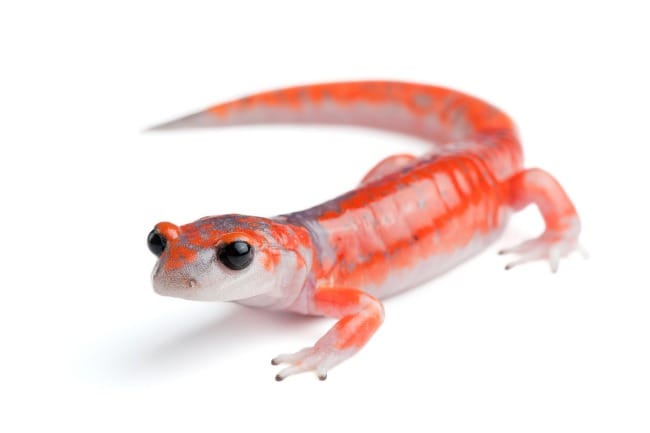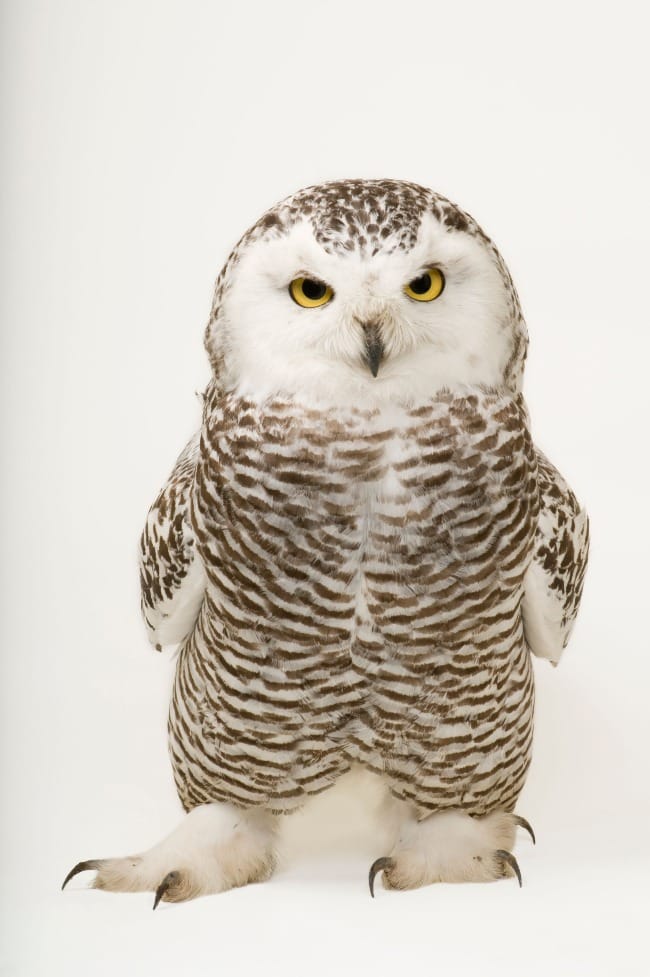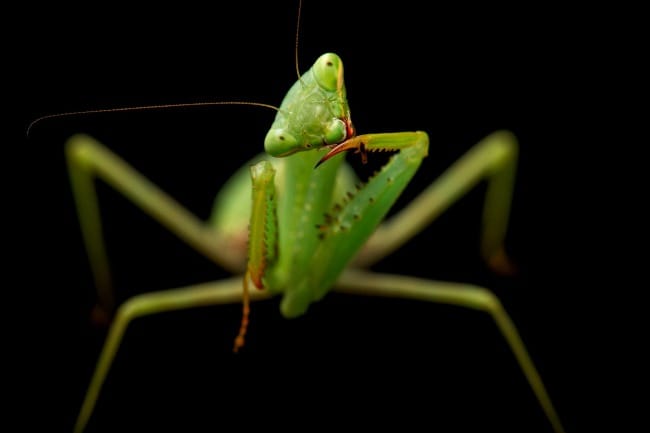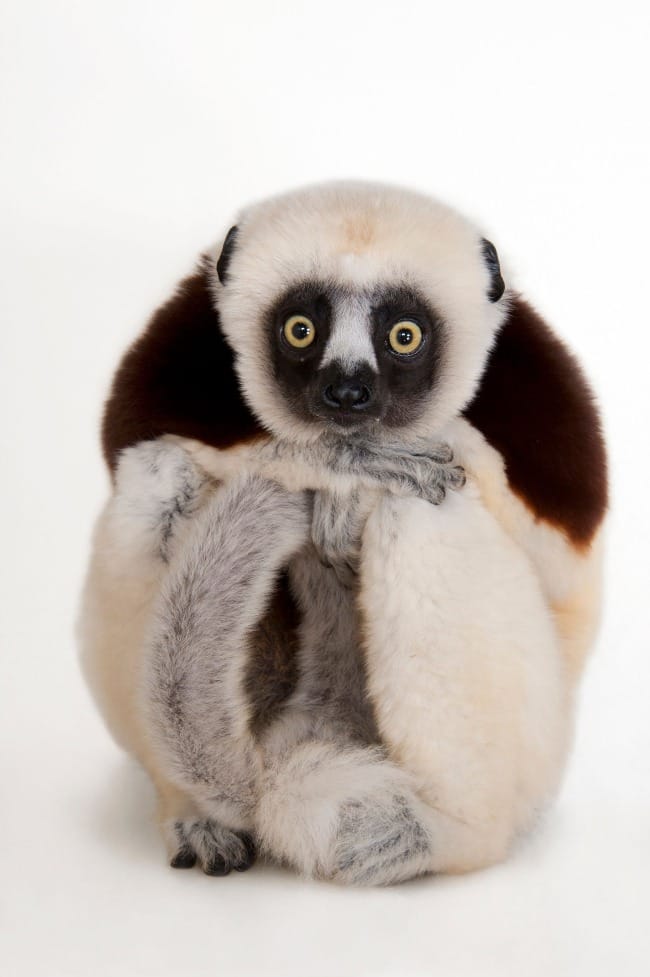Joel Sartore has photographed and advocated for animals for over 30 years, particularly focusing on those in danger of extinction. For the first 17 years, he photographed grizzly bears, koalas, wolves and other animals in the wild, creating conservation stories for National Geographic and others. His goal was to create awareness of animals and the threats to them, hoping to move the public toward conservation, but he became discouraged by what he saw as apathy on the part of the public.
So, in 2005, he changed his way of doing things. He went from taking photographs of a salmon jumping towards a bear's mouth and a goat straddling the rock face of a cliff to photographing animals posed against black and white backdrops within a controlled, studio-like setting.

What he initially called "The Biodiversity Project" began as a personal project based in his concern for endangered amphibians. Over the past 18 years, it has grown into a collaborative project with National Geographic called "The Photo Ark." (Special thanks to Joel Sartore and National Geographic for granting us permission to use these photos). The goal of the project is to photograph every species living (approximately 25,000) under human care—before they become extinct. It is an ambitious project, although with more than two million identified species on Earth, even if Sartore accomplishes his goal, he will still have only photographed 1% of the world's identified creatures.
He doesn't aim to just create a giant archive or giant obituary of animals that once existed, but wants to draw people, through his photographs, into caring about the animals. Averting the extinction of animals, like the passenger pigeon he learned about as a young boy, would be success for him.

Sartore has found that the studio images he snaps against a field of black and white are more effective at sparking interest and advocacy for animals than the field photographs he used to take. It may seem strange that a studio portrait of an animal creates more conservationists than photographs of creatures in their own habitat, living their natural lives. According to Sartore, "It's the eye contact that motivates people. We're primates. The eye contact motivates people to want to care."
With large animals, Sartore brings the studio to them, Their pens are lined with black or white cloth or paper, turning them into photography studios. When photographing smaller animals, the animals are moved by crate into Sartore's own shooting tent. The animals' keepers provide important assistance by choosing specific animals that they believe will be cooperative during the photography session and by using treats to attract the animals' attention toward the camera long enough for Sartore to get good camera shots. The plainness of the setting is intentional as it focuses spotlight on the single creature being photographed—the setting and other possible distractions are eliminated from the photo frame.

The portraits narrow in on the animals—their individuality, intricacy, and beauty. The focus given to each animal in their own individual portrait reflects the consistent respect and care each is given. Because all creatures, no matter what their size, are scaled to fill the same size on a photographic page, a type of parity for each is communicated. This is especially significant for creatures that don't naturally pull the human heartstrings—less cuddly creatures such as insects and reptiles, as well as those we may not even know exist. By giving them an equal place in the Photo Ark, Sartore shows that each creature is part of this world and that the demise of any creature would be a significant loss to the whole.
“Where I get my energy from is the fact that for most of the animals I photograph, this is the only chance they’ll get to have their stories told to an international audience. For the rare ones, that means it’s the one and only time their voices will be heard before they go extinct. That’s a huge motivator for me, and a big honor. The world knows about tigers and chimpanzees and giraffes, but they don’t know about brown bats... They don’t know about sparrows or toads, and they certainly don’t know much about snakes or minnows."
Sartore plans for this to be a 25-year project, which means there are five more years to complete his goal of photographing all of those 25,000 species around the world. As of the end of September, the number of different species included in the Photo Ark totaled 14,764.

The publicity the Photo Ark has attracted has been helpful in accomplishing its goals to "inspire action through education" and "help save wildlife by supporting on-the-ground conservation efforts." The Photo Ark has been used to create curriculum, support conservation efforts through funding, and enable Sartore to advocate for the creatures of the world by both showing their value through photographs and telling about them in speaking engagements.
In May, 2023, the U.S. Postal Service issued a set of stamps in honor of the 50th anniversary of The Endangered Animal Act featuring 20 of Sartore's photos from The Photo Ark. These images and the rest of the 48,895 images in the Photo Ark can be found on Joel Sartore's website. You can help fund the Photo Ark by purchasing a print of any of the images from the Photo Ark and you can find practical suggestions of what you can do to help save species on a tip list here.
With help from our readers all over the world, I would love to create and publish our own "Circlewood Photo Ark." Can you find a creature (or creatures) to add to our ark? If so, take a picture (a close-up if possible) and send it to me at louise.conner@circlewood.online before the end of October. If we get enough photos for a collection, I'll create a column of them so everyone can see what creatures are perching in the trees and hiding under the leaves in our own parts of the world. (If you send in a picture, please include your name, the name of the creature if you know it, and your location—thanks!).
Feel free to leave a comment below or contact me directly at louise.conner@circlewood.online.
Louise
